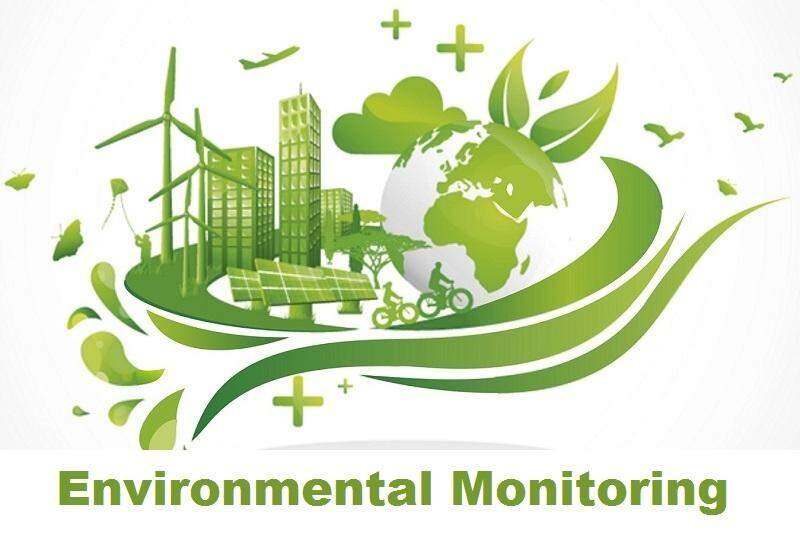Overview Regarding the Environmental Compliance Monitoring
Environmental Compliance Monitoring involves using observational techniques and tools like sensors, wireless communications, and remote management software to identify, observe, and measure the environmental conditions at a specific location. However, the actual implementation of these processes can vary significantly based on the specific purpose. Usually, it has mainly been employed for ecological reasons. For instance, researchers interested in studying air pollution or the impact of industrial pollution on protected areas and habitats would typically use disconnected methods to measure environmental conditions over a long period. They would periodically retrieve the monitoring devices deployed in the field to gather the desired data. However, advancements in technology, such as IoT devices, wireless connectivity, and platforms enabling instant access to information from any location, have expanded the scope of Environmental Compliance Monitoring to new applications. These applications include monitoring water treatment plants and groundwater sources and detecting leaks in oil and gas pipelines.
Objectives of Environmental Compliance Monitoring
- Enhancing operational safety and efficiency: By employing Environmental Compliance Monitoring, companies can observe and respond to changes in on-site conditions, thereby reducing the risks of equipment failures, accidents, and resulting damages.
- Mitigating the organization's environmental impact: Industrial facilities can utilize ecological monitoring techniques to track and identify ways to reduce pollution or carbon emissions, thus minimizing their ecological footprint.
- Validating ongoing safety protocols: Companies operating in industries that rely on specific site conditions for effective operation can assess the effectiveness of their existing procedures by utilizing Environmental Compliance Monitoring reports.
Importance of Environmental Compliance Monitoring
- Mitigating the risk of equipment failure by suspending operations during unfavorable conditions.
- Preventing the accumulation of detrimental pollution in groundwater, soil, and both indoor and outdoor air.
- Reducing the likelihood of workplace accidents by implementing leak detection and pollution monitoring systems in high-risk environments such as oil and natural gas fields.
- Safeguarding local plant and animal life, agricultural production, and public health by enhancing groundwater and aquifer protection measures.
Types of Environmental Compliance Monitoring
- Monitoring air quality
- Sampling and analysing water
- Testing noise levels
- Evaluating soil quality
- Conducting microbial monitoring
The specific type of monitoring employed depends on the objectives or purposes at hand. The methods used for monitoring can vary based on the location, duration of the survey, and timing of the survey.
Methods of Environmental Compliance Monitoring
- Filtration: This method involves selecting the appropriate filtration technique based on the specific pollutants that need to be monitored.
- Impingers: High-velocity air is passed through impingers, either wet or dry, depending on the type of collecting surface required. Dry impingers are used when the collecting surface is dry, while wet impingers are used when the collecting surface is wet.
- Sedimentation: A simple method for air sampling where an open container is placed in an unobstructed outdoor area. This method is commonly used to measure the deposition of dust in a particular region.
- Electrostatic Samples: Efficient for collecting small samples, this method involves particles in the sampler picking up a charge and depositing it on electrodes.
- Adsorption: Gases are adsorbed onto solid surfaces in this method. Materials like activated carbon, silica gel, and alumina are used in the adsorption process.
- Condensation: The collected sample is cooled below the boiling point of the analyte, resulting in concentration.
- Grab Sampling: High-volume samplers with filters are used in air quality monitoring. The filters, made of glass fibres, are 99% efficient in capturing particles with a diameter of 0.8 µ.
- Composite Sampling: Samples are collected from different locations at different times to create a more representative sample of the pollution source.
Environmental Compliance Monitoring Tools
- Sampling: Automated samplers and high-volume samplers are utilized to collect samples for analysis.
- Monitoring: Instruments such as air monitoring sensors, data loggers, noise level meters, water testing sensors, indoor air quality meters, and flue gas monitors are employed to continuously monitor and measure environmental parameters.
- Data loggers: Real-time data loggers are used to receive and store environmental data in real time.
- Laboratory tools: Temperature chambers, analysers of various types, balances, evaporators, particle counters, pH meters, refractometers, and other laboratory equipment are utilized for detailed analysis and measurement of environmental samples.
Documents Required for Environmental Compliance Monitoring
- EMS: Outlining the extent and boundaries of the Environmental Management System (EMS).
- Environmental Policy: Stating the organization's commitment and principles regarding environmental management.
- Risks, Opportunities, and Required Processes: Identifying the risks and opportunities to be addressed and the processes needed to achieve environmental goals.
- Criteria for Significant Environmental Aspects Evaluation: Establishing the criteria for evaluating significant environmental aspects.
- Environmental Aspects and Associated Impacts: Documenting the environmental aspects and their corresponding impacts.
- Compliance Obligations Document: Describing the legal and other requirements that the organization must comply with.
- Training and Qualifications Records: Maintaining records of employee training, skills, experience, and qualifications related to environmental management.
- Evidence of Communication: Documenting the communication processes and exchanges regarding environmental matters.
- Monitoring and Measurement Results: Recording the results of monitoring and measurements.
- Compliance Evaluation Results: Document the findings from evaluating compliance with environmental requirements.
- Internal Audit Program: Outlining the program for conducting internal audits of the EMS.
- Results of Internal Audits: Reporting the outcomes and findings of internal audits.
- Results of Management Review: Document the results and decisions made during management reviews of the EMS.
- Results of Corrective Actions: Recording the results and effectiveness of corrective actions taken to address identified issues.
How MLC Can Assist You
| Aspect | Details |
|---|---|
| End-to-End Assistance | Owing to our extensive experience of over ten years in the field of Environmental approvals, our team of professionals is fully equipped to provide comprehensive assistance for your Environmental Compliance Monitoring. |
| Expert Legal Guidance | MLC provides full support services for Environmental Compliance Monitoring, including legal advice, through a customizable package that can be tailored to the priorities and needs of our clients. |
| Best in Class Client Support | Our dedicated support team ensures that our clients are kept up to date with the latest guidelines and updates from relevant government departments regarding Environmental Compliance Monitoring and other relevant information. |





